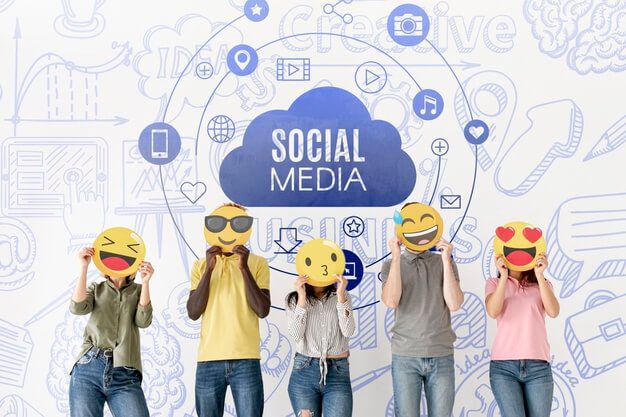Continue to discover how to integrate organic and paid social media…
What’s paid social media?
Paid social media is another word for promoting. It’s when manufacturers pay money to Facebook, LinkedIn, Twitter, YouTube, etc. in order to have their content material shared with specific new audiences who’re likely to have an interest, either via “boosting” their organic content material or designing distinctive commercials.
Paid social is experiencing an uptick, according to eMarketer, as customers get more snug with the concept of shopping directly from their social feeds.
Source: eMarketer
However, B2C retailers aren’t the only business focusing on social advertising. More so than organic content material, paid posts are one of the simplest ways for manufacturers to focus on new audiences on social media and convert them to prospects. Manufacturers use paid social to:
- increase brand awareness and attract new followers
- promote their newest deal, content material, occasion, etc.
- generate leads
- drive conversions (including e-commerce gross sales)
Here are some current examples we’ve noted.
Google put the advert budget behind these feel-good human interest stories highlighting the corporate’s importance to small companies during the pandemic. Paying to advertise these videos ensured they’d be seen by customers beyond the (relatively) low quantity who comply with the corporate’s official accounts. In case your brand has the budget for a charm offensive, one of these soft-touch adverts could be significant for relationship-building, even if it isn’t bringing in gross sales, per se.
Source: @londonreviewofbooks
Meanwhile, a more traditional method is to focus on customers who’ve already proven their interest in your niche. The London Review of Books, for example, uses the tried-and-true formula: goal individuals who follow related accounts (on this case, FSG Books, Artforum, the Paris Review, etc.), provide them a considerable discount and direct them to a frictionless landing page utilizing Instagram Shopping.
Source: @dispatchcoffee
To outlive the pandemic, Dispatch Coffee pivoted from local cafe and roastery to bean delivery subscription service. Besides, Instagram adverts allow them to goal prospects in a particular geographic range to get the word out.
Organic vs paid social media
Organic and paid social methods each have their own benefits and drawbacks. Let’s summarize them.
An organic social media technique nurtures your relationship with your clients or viewers. It helps you:
- Establish and grow your brand’s presence where persons are already spending their time
- Support and retain current prospects
- Convert new clients by showing them what you’re about
Nevertheless, organic is commonly slower to reach business targets, and whereas it’s technically free, it takes plenty of time, experimentation, and/or experience to get right.
Meanwhile, a paid social media strategy is how you connect with new clients or viewers members. It helps you:
- Reach a larger variety of folks
- Target your ideal customer more exactly
- Hit your business targets quicker
That said, it requires a budget and its personal form of expertise (these ads don’t monitor themselves).
In short, whereas organic activity is important for relationship-building, it’s additionally true that network ranking algorithms mean pay-to-play is a fact of life on social, now.





